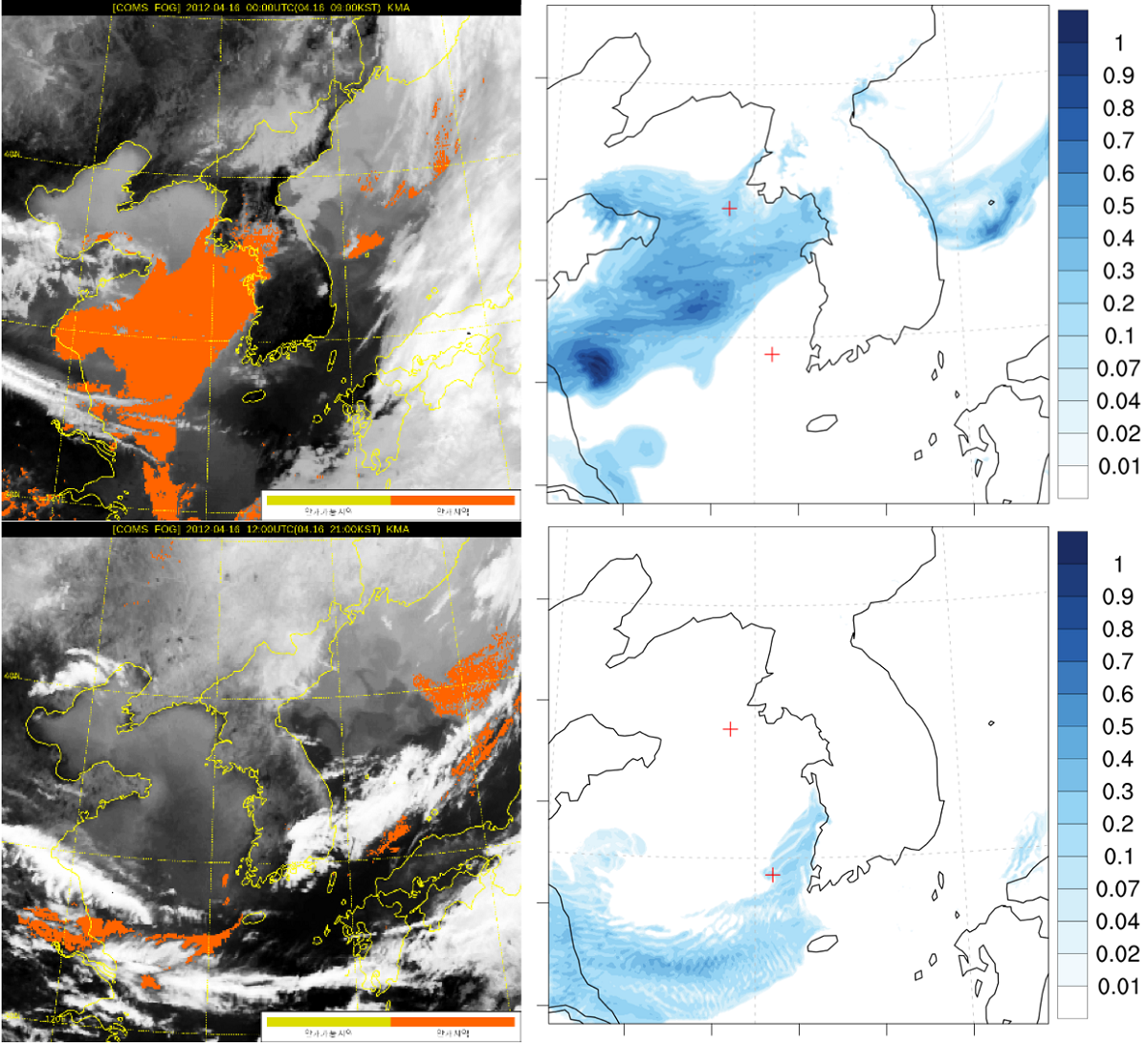Sea fog event over the Eastern Yellow Sea on 15–16 April 2012 was reproduced in the Weather Research and Forecasting (WRF) simulation with high-resolution to investigate the roles of phys-ical processes and synoptic-scale flows on advection fog with sea surface warming. Initially, longwave radiative cooling (LRC) with negative sensible heat flux (SHF) due to the turbulence af-ter sunset triggered a formation of cloud at the surface under the moist advection with a southerly wind. This is a conventional type of advection fog. At night, continuous cooling due to longwave radiation and SHF near the surface modulated the change of the SHF from negative to positive, resulting in a drastic increase in the latent heat flux (LHF) that provided sufficient moisture at lower atmosphere (self-moistening). This is a favorable condition for advection fog with sea sur-face heating (ssH), and this transition represents advection fog with ssH. Enhanced turbulent mixing driven by a buoyancy force increased the depth of the sea fog with a gradual rise in the marine atmospheric boundary layer (MABL) height, even at nighttime. In addition, cold advec-tion with a prevailing northerly wind at the top of the MABL led to a drastic increase in turbulent mixing and the MABL height, which resulted in rapid growth of the height of sea fog due to ver-tical diffusion. After sunrise, shortwave radiative warming in the fog layers offsetting the LRC near the surface weakened thermal instability, which contributed to the reduction in the MABL height, even during the daytime. In addition, dry advection of northerly wind induced dissipa-tion of the fog via evaporation. An additional sensitivity test of sea surface salinity showed weaker and shallower sea fog than the control due to the decrease in both the LHF and local self-moistening.

